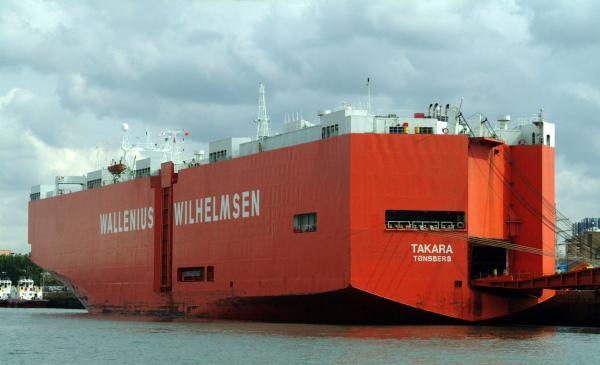Roll-On Roll-Off Shipping Services

If you are looking for overseas car shipping, or from the U.S. mainland to Hawaii, a Roll-On, Roll-Off shipping service (RoRo) might be something that you wish to consider. With this kind of shipping, your car will be loaded on a ship and transported to its destination by sea. However, instead of it being lifted on and off the ship using lift gates or cranes, your vehicle will be ‘rolled on’ to the ship when it is being loaded and then similarly ‘rolled off’ the ship at its port of destination.
Advantages of Roll-On, Roll-Off Shipping
One of the main advantages of Roll-On, Roll-Off shipping is cost. RoRo services are typically more economical than lift on lift off services. It is also more economical than container shipping, in which your car will be stowed in a large container and then transported to its destination. These days, most new cars are shipped to international destinations using RoRo shipping.
Roll-On, Roll-Off Ships
Roll-On, Roll-Off ships usually have boarding ramps on the bow or the stern that allow for vehicles to be driven on board the ship and driven off it as well. Sometimes, the ramps are built-in to the ship, and, other times, the ramps are land-based platforms. The interior of ships that are used for RoRo transport resemble large parking garages. Vehicles are driven to their allotted lanes and spaces on the ship, and then secured in place using heavy straps and wheel blocks that are designed to prevent the vehicle from moving while it is in transit.
RoRo Shipping Costs
Because the cargo carried on Roll-On, Roll-Off ships can vary dramatically in length, height and size, auto shipping companies use a metric known as Lanes in Meters (LIMs) to compute shipping rates. With this method, costs are based on the total space that is occupied by the vehicle as measured by the length and width of the vehicle, or the lanes in meters that it occupies. Generally, with RoRo shipping, smaller vehicles cost less to transport compared to bigger vehicles. So, someone shipping a Hummer or a full-sized SUV would pay more than someone transporting a standard sedan.
Some RoRo services use ferries and barges for transporting vehicles, while others use full-size cargo ships. Typically, the larger RoRo ships can carry between 200 to 300 cars at a time, though some of the biggest vessels in the world are designed to transport more than 1,000 cars. Some shipping companies combine RoRo shipping with container shipping to optimize their loads. When a RoRo ship is used purely for car transport services it is also referred to as a Pure Car Carrier (PCC).
Most Ports Offer RoRo Service
Most major ports in the country offer Roll-On, Roll-Off services. If you live close to a port that offers the service, you can even drive your vehicle on board the ship yourself and similarly drive it off the ship at your destination. If you live far away from a port city, you can arrange to have your car picked up from your location and then transported to the nearest port city by the car shipping company.
Tips to Keep in Mind
Here are a few tips to keep in mind when using RoRo shipping to transport your car:
- You will be required to provide copies of your title and registration prior to shipping. If your car is being financed by a bank, you will need to obtain a no objection statement from them first prior to shipping.
- Shipping companies will typically require you to leave only just enough gas in your vehicle for it to be rolled on and rolled off the ship.
- Most do not permit any sort of luggage or cargo to be stowed in the car while it is being transported.
A RoRo shipping service is something you should consider, especially if you need to have your car transported to an international destination on a budget.
